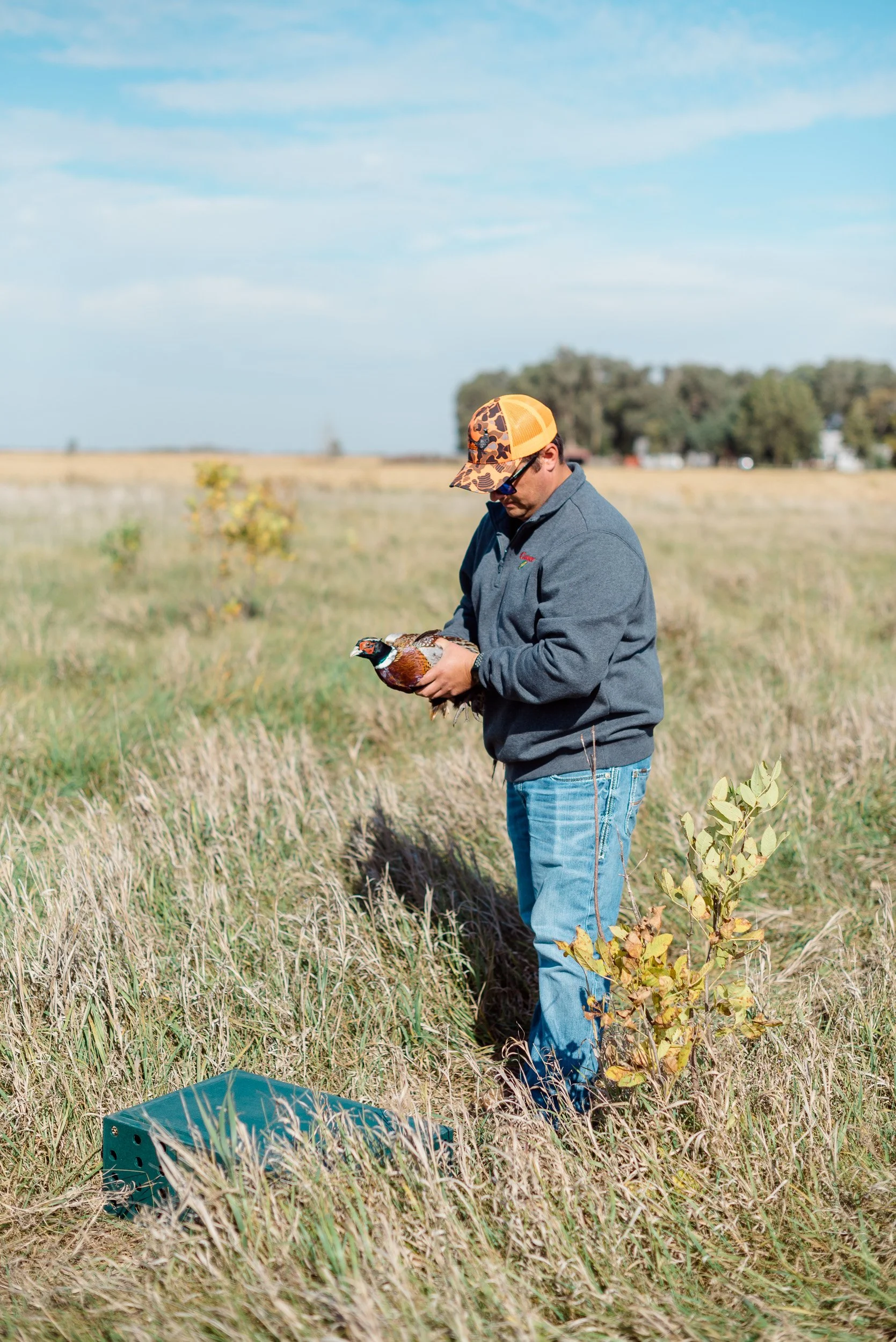Why Soy Is a Smart Choice for Pheasant Nutrition
In South Dakota, conservation isn’t just a cause; it’s a way of life. From the fields that grow our crops to the grasslands that shelter wildlife, every acre tells a story of care and balance. Just outside Vermillion, AJ Schmitz and the Southeast South Dakota Pheasant Association bring that story to life. They work to combine farming, wildlife, and sustainability. Their goal is to help the pheasant population and the land they live on.
A Mission Rooted in Conservation
For AJ, raising pheasants isn’t just a business, it’s a commitment to community and conservation. On 300 acres of carefully managed habitat, the Association releases pheasants each year to support hunting, wildlife diversity, and local outdoor traditions.
The operation is about more than releasing birds. Handlers care for each bird from egg to release, focusing on nutrition, space, and health.
Feeding, monitoring, and handling hundreds of birds takes skill, patience, and dedication. The results benefit both the local ecosystem and South Dakota’s rich hunting heritage.
Why Soy Matters for Pheasant Nutrition
Feeding hundreds of birds takes more than time and care; it takes the right nutrition. That’s where soy comes in.
Pheasants thrive on protein-rich diets that help them grow strong, develop healthy feathers, and survive changing weather conditions. Rather than feeding raw soybeans, which contain trypsin inhibitors that make them difficult for birds to digest, the Association uses soybean meal — a byproduct created after oil is extracted from soybeans.
Soybean meal provides a balanced, highly digestible source of plant protein and energy, ensuring that young chicks have the nutrients they need from the moment they hatch to when they’re released into the wild.
By choosing soy-based feed, the Association supports local South Dakota farmers and strengthens a full circle of sustainable agriculture.
Supporting Sustainable Practices
AJ’s operation demonstrates how thoughtful nutrition choices and careful habitat management can work together. Pheasants raised with soy-based feed tend to be healthier, more active, and better equipped to survive in the wild. This helps the birds and allows hunters and conservationists to enjoy a strong population every year.
The Association strategically manages pen releases by dispersing birds across multiple locations, which helps prevent disease and improves survival rates.
With critical nutrition and strategic habitat management, AJ and his team are helping maintain a thriving pheasant population in South Dakota.
A Shared Commitment to Wildlife
Farmers work diligently to protect the soil, water, and natural resources that enable their crops to thrive. That care extends beyond the fields, creating a healthy environment for all living things. Similarly, groups like AJ’s focus on helping wildlife flourish by providing safe spaces, nutritious food, and thoughtful management practices. By working together, farmers and wildlife advocates strengthen the land, support local species, and ensure a sustainable future.
Soy and soybean meal play a central role in this cycle. It provides the protein and energy that pheasants need to grow strong and healthy, while also supporting South Dakota farmers and the land they care for.
At Hungry for Truth, we’re proud to share stories like AJ’s, showing how local farming and wildlife care go hand in hand. Soy isn’t just important for pheasant health, its many uses touch our daily lives. From nutritious snacks to clothing and fashion, every part of the cycle matters.
Learn more about how soy supports South Dakota farmers and wildlife by exploring more soy uses and Hungry for Truth stories.






